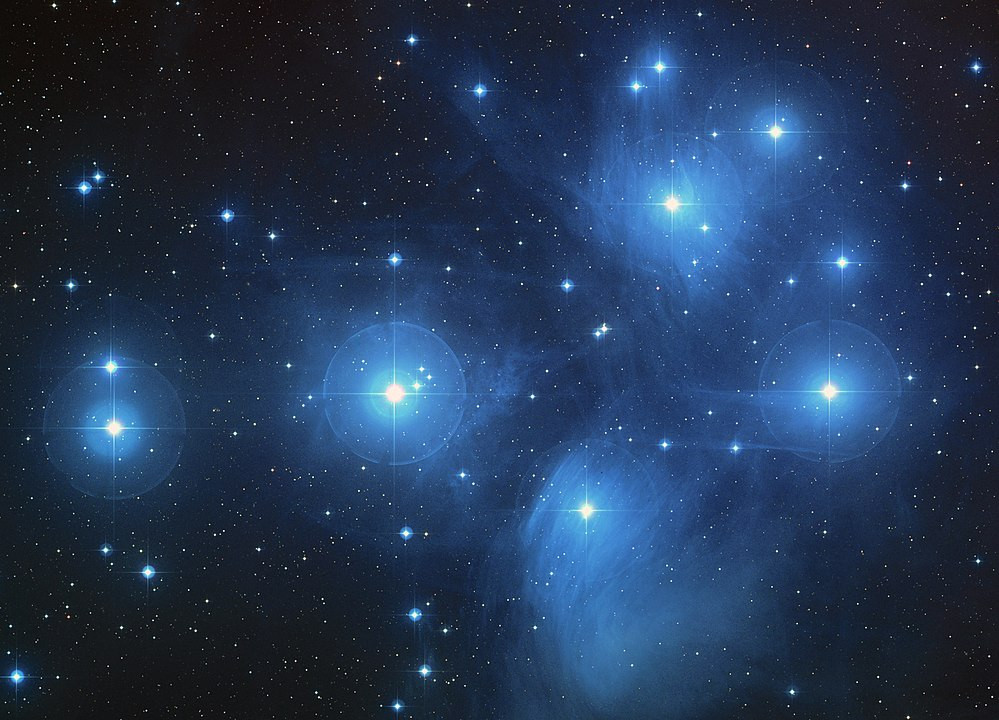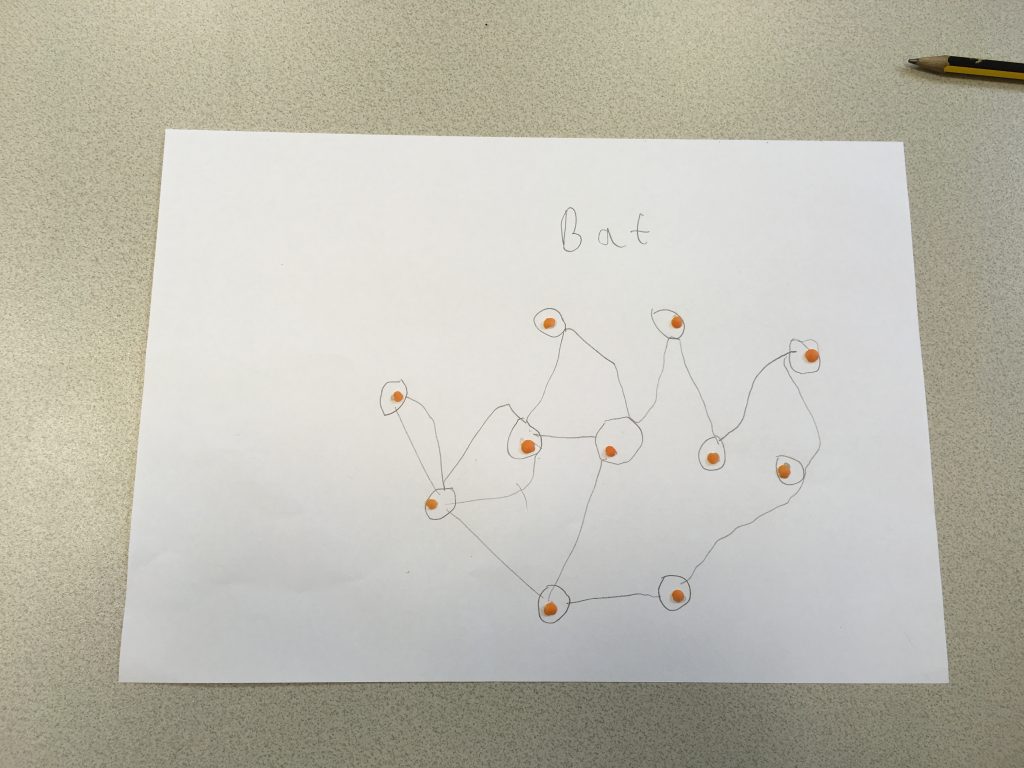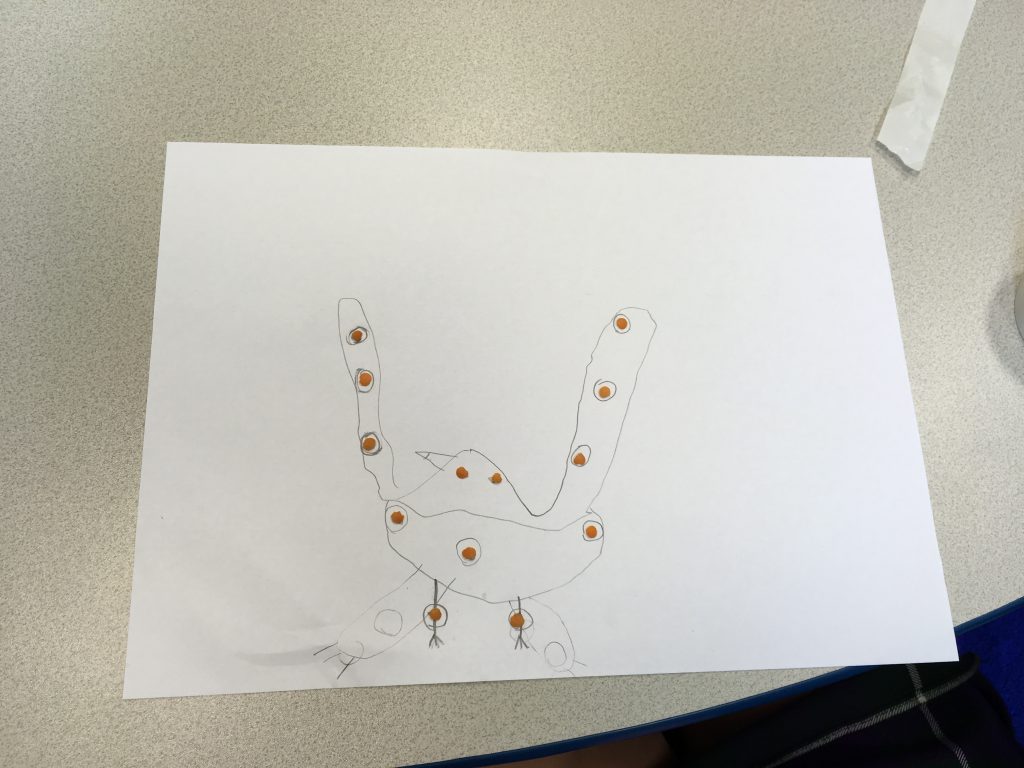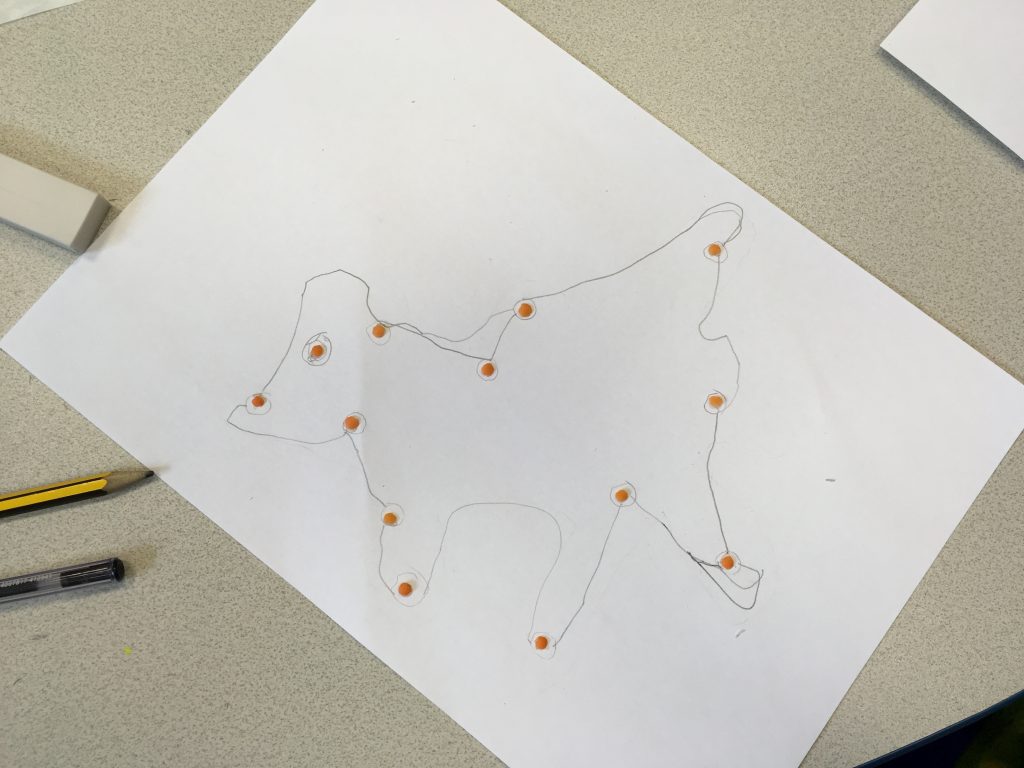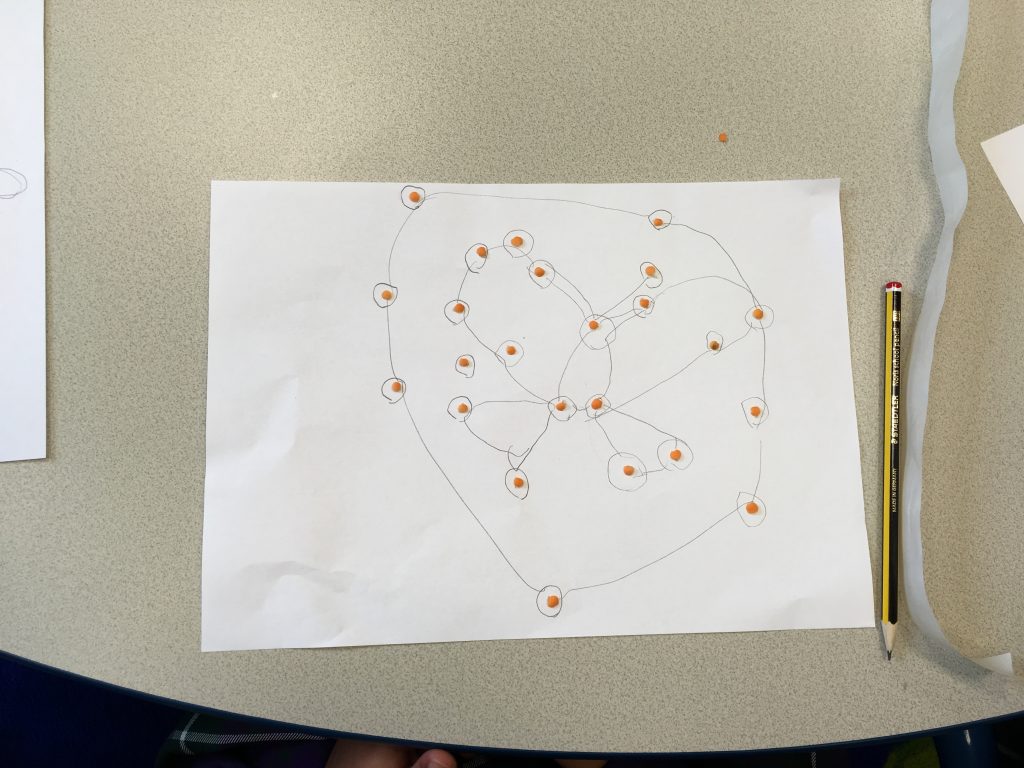Summary | Key concept | Science Story | Background Science | Activity | Curriculum links | Linked Activities
- Suggested Age Range: 8 – 9 years; 9 – 10 years
- UK Primary Curriculum: Key Stage Two (lower)
- Suggested UK Year Group: Year 4; Year 5
- UK Primary Curriculum Link: States of matter
- Science Subject: Stars; Constellations
- Science Question: What are stars? What are constellations? How are stars arranged in space?
- Activity type: individual
- Suggested linked stories: How Coyote made the Stars; How the Pleiades were created; How Fisher went to Skyland; Starlight; The Weaving Maiden; Following the Stars to Freedom – Part One
Brief summary: The constellations that we know are patterns of stars in the sky, often shaped like animals or characters from legends. While these patterns are extremely useful for learning your way around the sky, and for use in navigation on the Earth, these constellations are the shapes that people make in the random patterns of stars in the sky.
Key concept: Constellations are groups of stars. From the same stars in the sky, different people see different shapes, and imagine different stories about them.
Key words: stars, constellations, light, night, patterns
The Science Story:
What do you see when you look at the sky?
The sky is blue during daytime, although sometimes it is covered in clouds and looks grey. At night we can see stars, the Moon, the planets, comets, meteors, as well as man-made things like aeroplanes and satellites.
How many stars can you see at night?
From most parts of the UK the night sky is lit by artificial light and we see a few hundred stars. In big cities like London, not many stars are visible at all. From more remote places where there are no streetlights you can see thousands of stars at night!
What are the stars? Are they made of rock like the Earth?
Stars are not made of rocks, they are made of gas. Stars are like the Sun, they are very big, very bright, and very, VERY hot. They look tiny and faint because they are so far away. Some stars are yellow, like the Sun, but some stars are blue, and some are red. Some stars are small, and some stars are really big!
Do you know what a pattern of stars is called?
A pattern of stars is called a constellation. Some constellations look like animals or people. Some cultures see animals in the patterns of stars in the sky, other cultures see kings and queens. Scientists call these patterns of stars constellations.
Can you name any constellations?
Famous constellations include Orion (the hunter), Leo (the lion), Scorpio (the scorpion), Cassiopeia (the queen of ancient Ethiopia), and Crux (the southern cross). Many of these constellations were invented by the people of ancient Greece, almost two thousand years ago, but other countries have different shapes that they see in the sky.
Why did the ancient people invent these constellations?
In ancient times it was very important to know the positions of the stars and how the stars changed with the seasons, because this meant that you could navigate, travelling safely to explore new places and able to find your way home again. We find it easy to remember something when we hear it told as a story.
Are the stars fixed on the sky?
Constellations look like patterns of stars on the sky, but stars are spread out like the trees in a forest: some stars are close to us, and others are much further away. Some stars are formed together at the same time, these are called clusters; other stars are formed at different times and much further apart, humans make patterns from these stars called constellations.
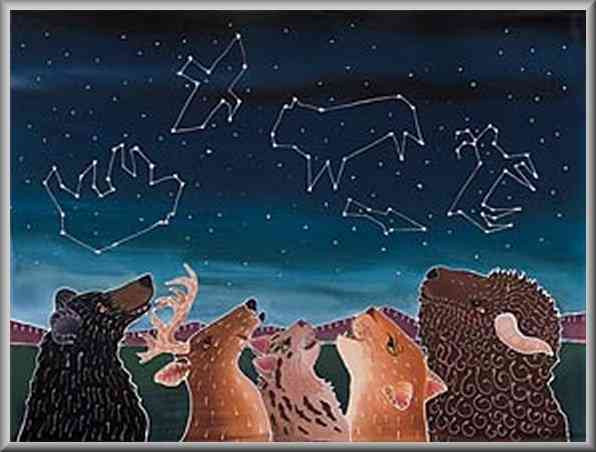
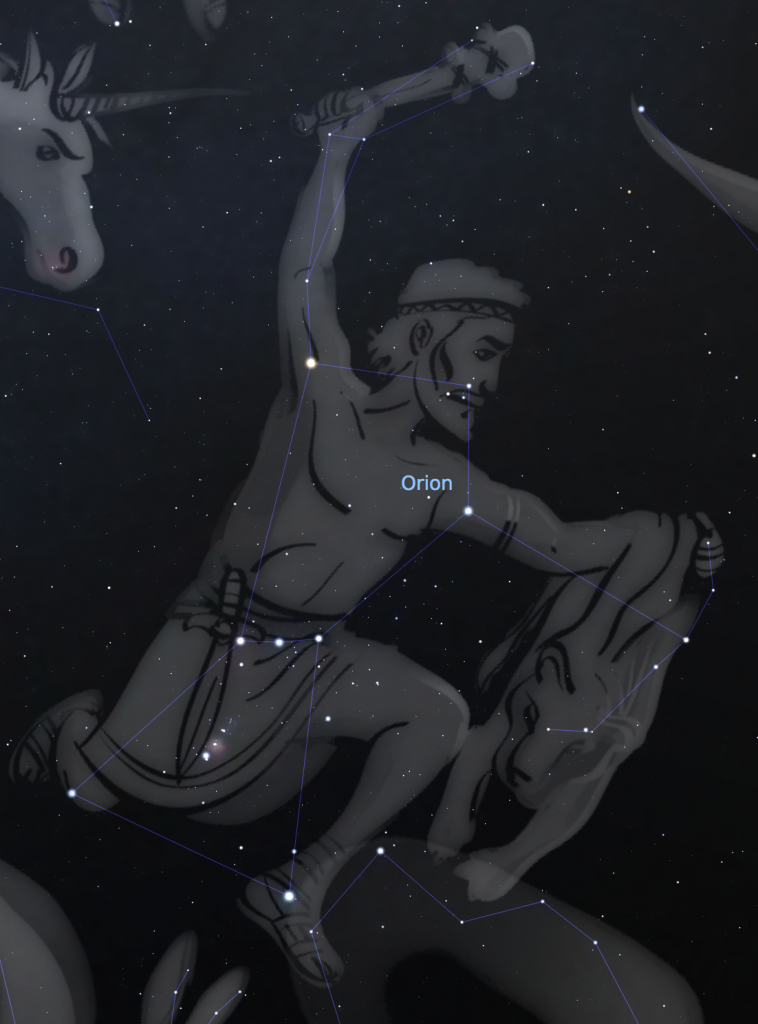
Orion – the Hunter 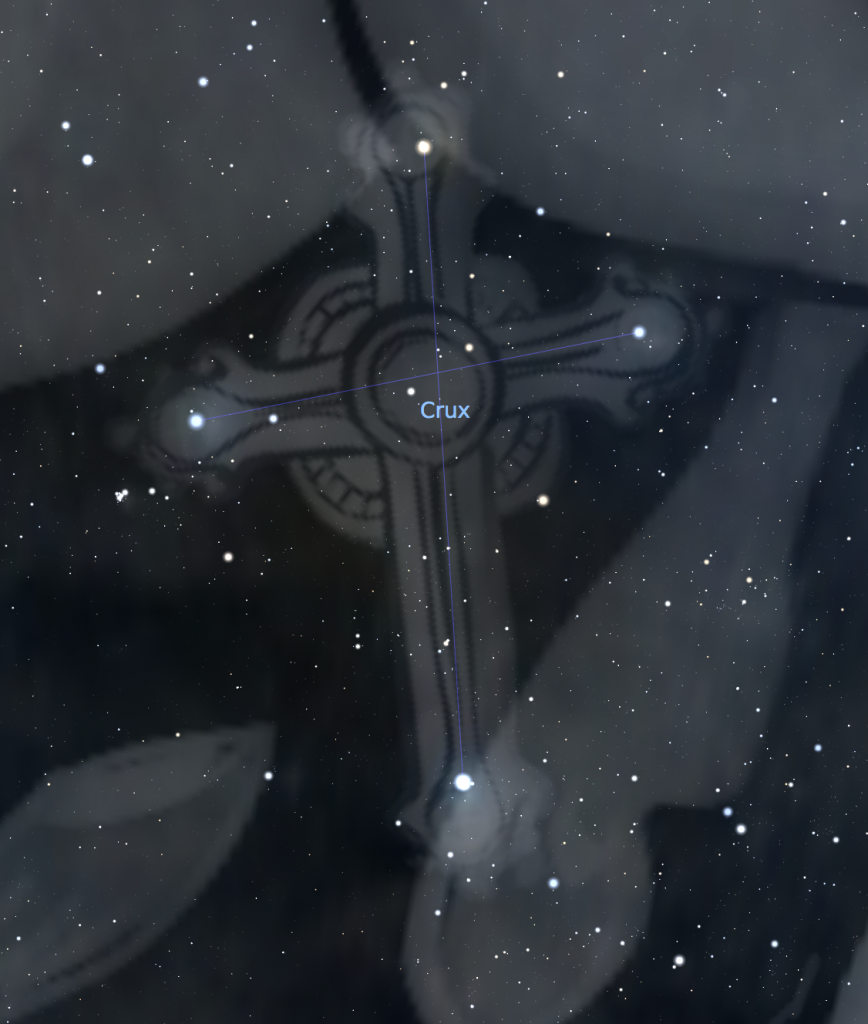
Crux – the southern cross 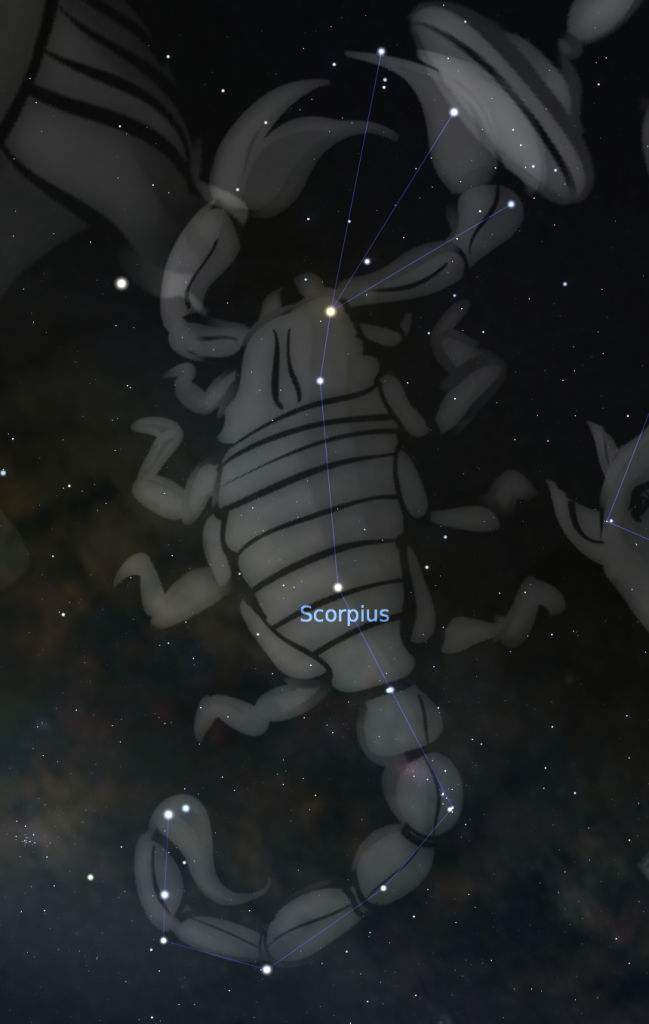
Scorpio- the scorpion 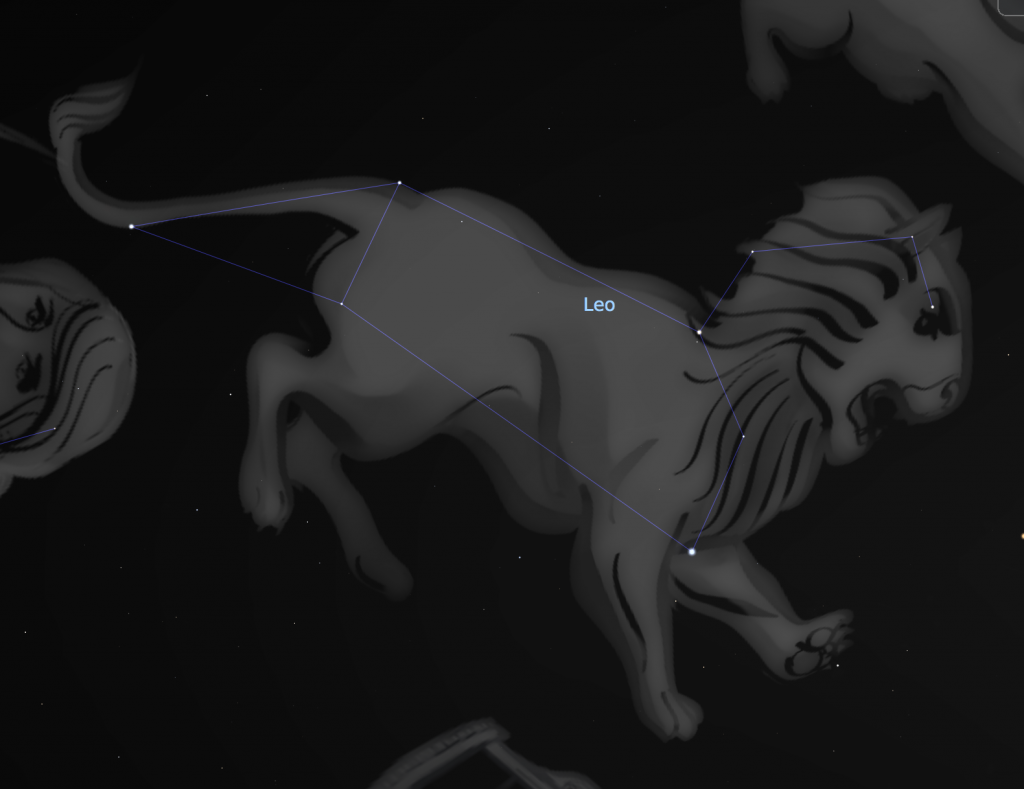
Leo – the lion 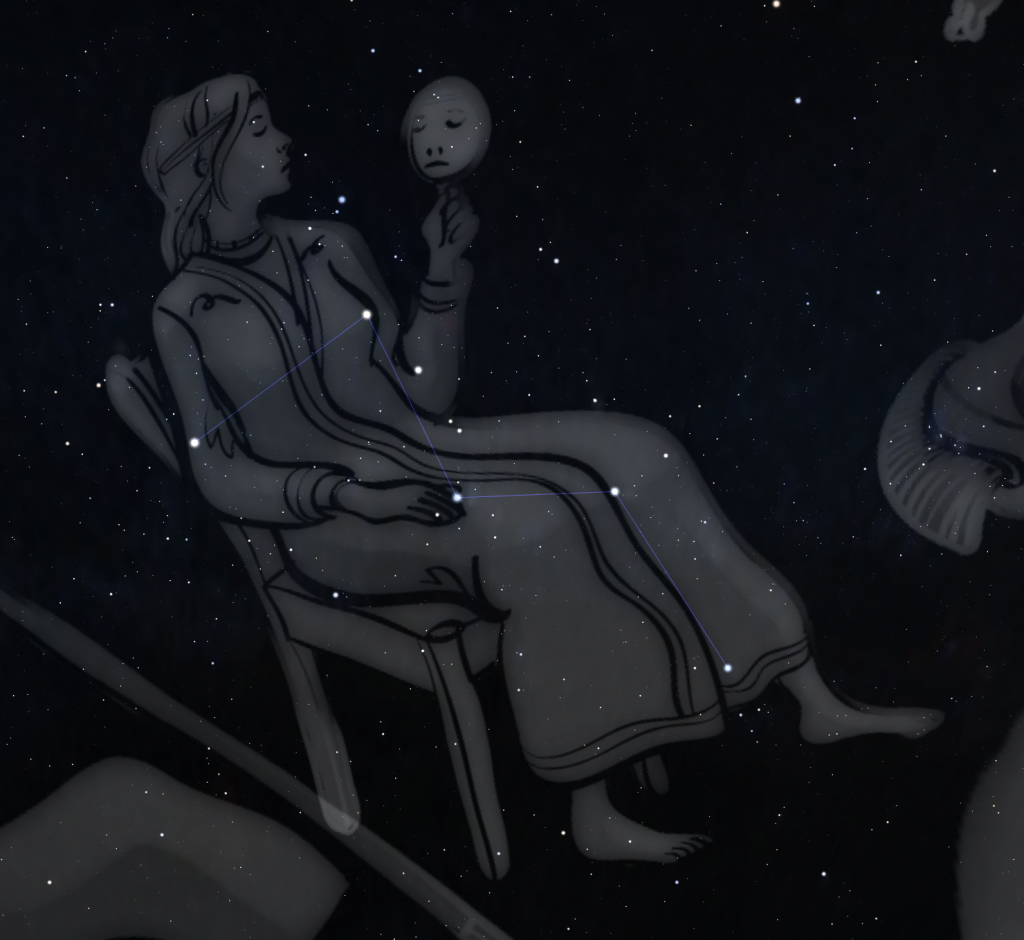
Cassiopeia – the queen of ancient Ethiopia
Above: images from the planetarium program Stellarium, showing the constellations referred to in the science story, above.
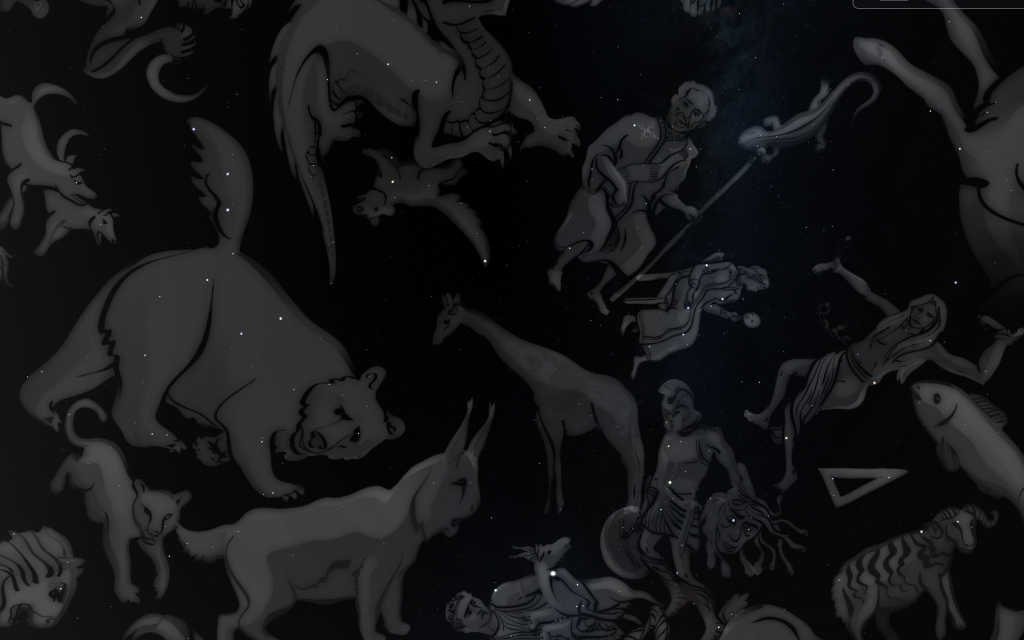
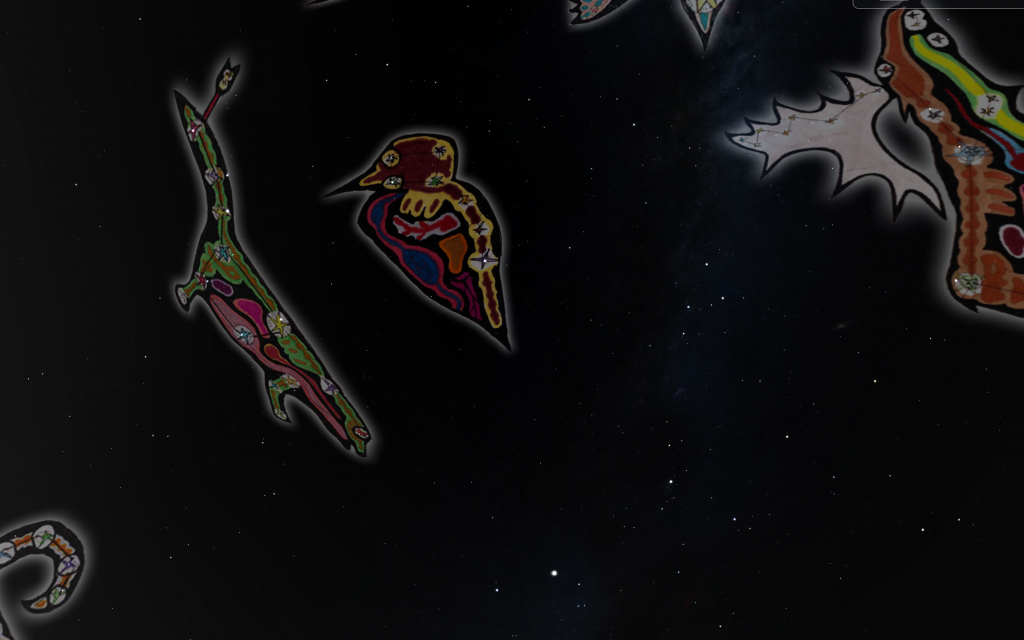
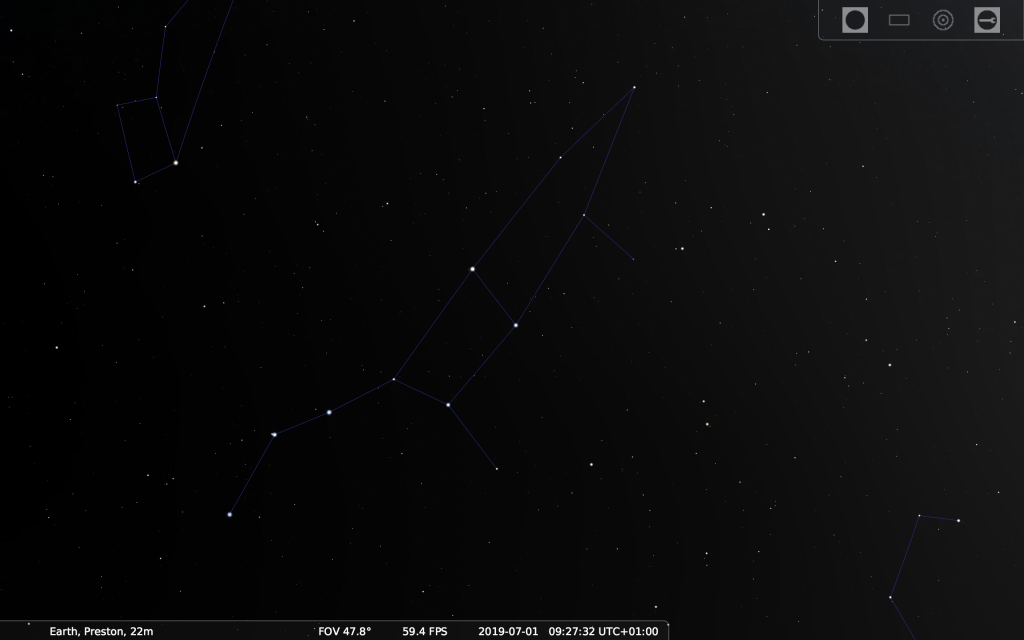
The Science: The stars that you see when you look up at the night sky are very like our own Sun – giant nuclear reactors that shine with incredible power. Our galaxy, known as the Milky Way, is made up of one hundred thousand million stars (roughly), including our own Sun, arranged in a disk shape. Our Sun sits inside the Milky Way, roughly two thirds of the distance from the centre to the edge of the disk.
Some stars are bigger and brighter than the Sun, others are smaller and fainter than the Sun. For stars of a particular brightness, the closer to the Earth a star is, the brighter it appears on the sky. A nearby star that is intrinsically faint can appear brighter to us than a more distant star that is inherently much brighter. This idea can be illustrated using distant streetlights and a nearby torch – even though the torch is actually fainter than the streetlight, it can be used to read a book up close even when not enough light is reaching you from the distant streetlight.
Some stars formed together at the same time, forming clusters. These are natural groups of stars that are physically close to each other in space. One of the most well-known clusters is known as the Seven Sisters (also known as the Pleiades Cluster). An image of the Seven Sisters can be seen on the left. This cluster is actually made up of several hundred stars which all formed together. Many cultures have their own stories about how this cluster of stars came to be in the sky.
In contrast to clusters, constellations are made of stars that formed in different locations at various different times – these groupings are entirely artificial. The constellation we will use in this activity is the Fisher constellation, similar to the Great Bear on the sky, but comes from the sky lore of the First Nations of America.
While we are used to thinking of constellations as patterns of stars on the sky, in reality they are made up of (usually) widely separated stars that are physically unrelated to each other. This activity illustrates the random nature of the stars by creating new constellations in a randomly-located set of lentils (or similar items).
The activity: In this activity, students use the random positions of lentils to construct their own constellation by joining the dots. They should be encouraged to look for shapes and patterns that they see in the lentils on the paper, some children may need help with this.
Distribute the materials prior to the activity. You can put a small handful of the lentils or other similar items in a paper bowl or plastic box and place one on each table for the students to use. Display one of the constellation pictures on the board, or distribute printed copies.
Props required:
- A4 paper
- Glue
- Pens or pencil
- Lentils or similar (~10 per pupil)
- Look carefully at the picture of the constellation. The dots are the stars. Can you see how the picture is made from the dots?
- You are going to create your own constellation! Take a small handful of lentils, the lentils will be the stars in your constellation.
- Hold the lentils in your hand over your paper.
- Open your hand and drop the lentils onto your paper.
- Look at the lentils on the paper – can you see any shapes in the pattern of your lentils? (If you can’t see a pattern, pick up your lentils and have another go!).
- Once you can see a pattern in your lentils, take your pen and draw carefully around each lentil.
- Using the glue, stick your lentils to the paper.
- Use your pen to connect up the dots so that you have a drawing of your shape.
- Give your constellation a name and write it on the paper.
- Decorate your constellation any way you like. Use pens, pencils or crayons to make your constellation look colourful.
- Use your imagination to come up with a story to explain how your constellation came to be in the sky.
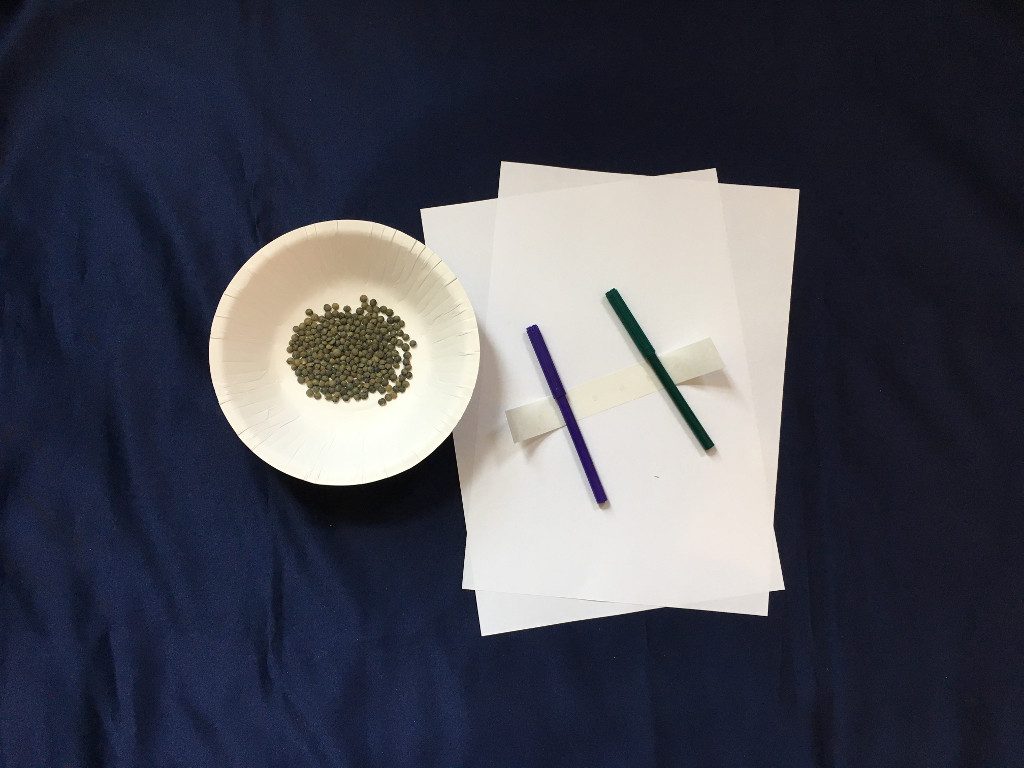
The materials needed to make a star map 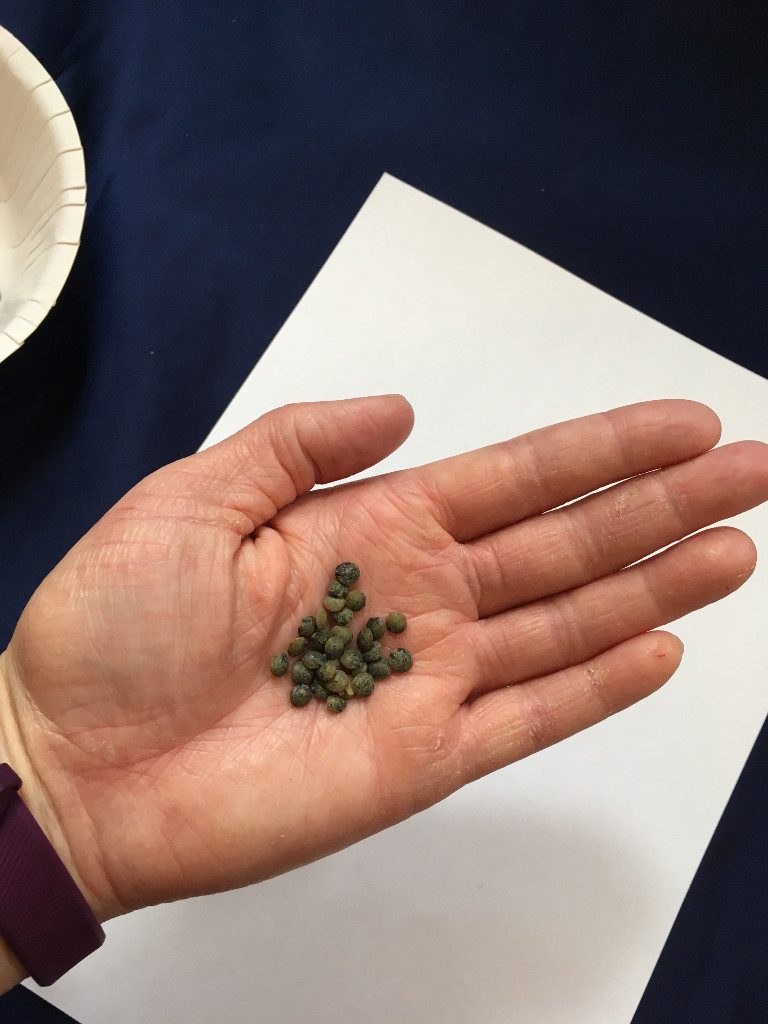
Step 2: take a small handful of lentils 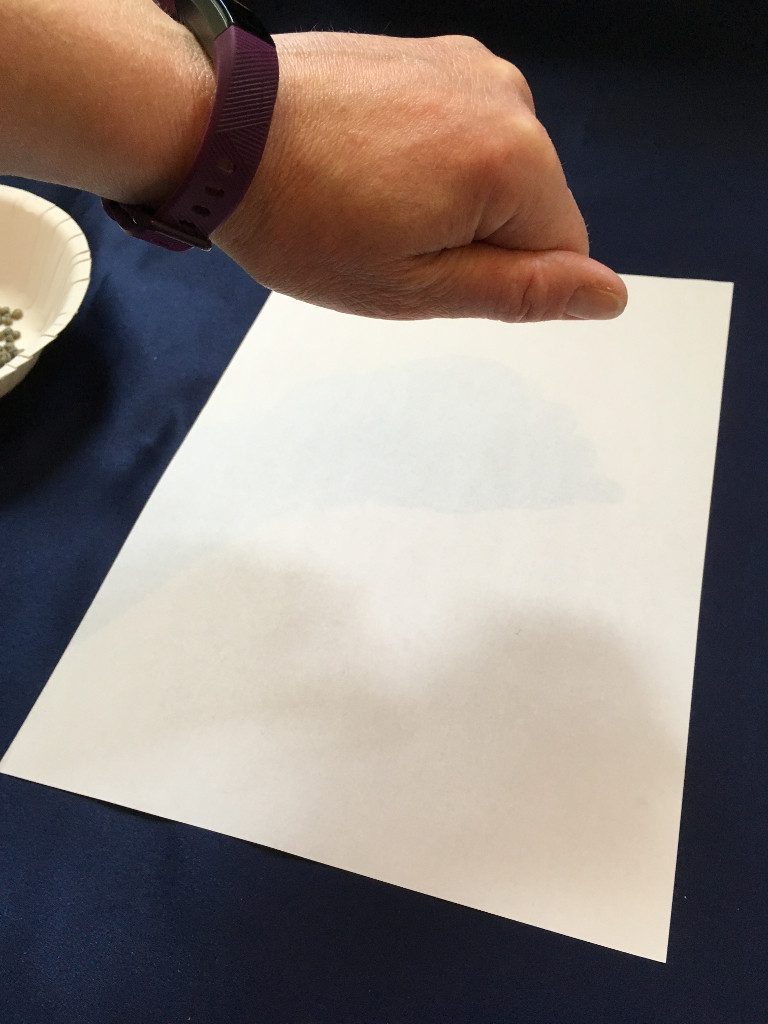
Step 3: hold the lentils over your paper 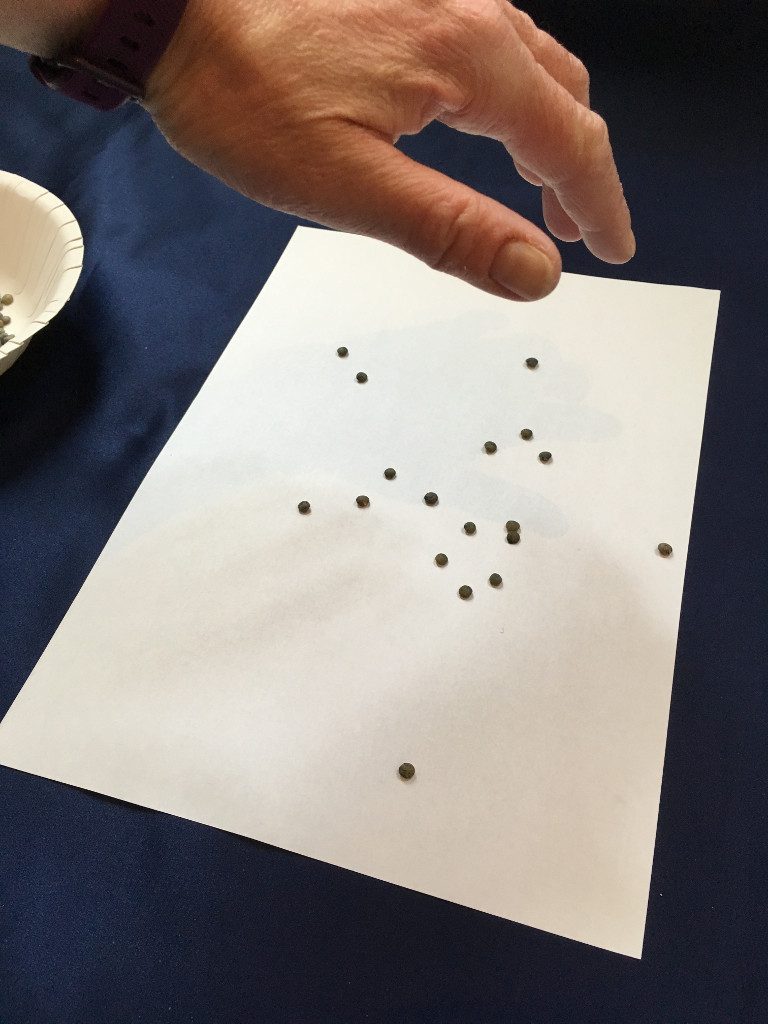
Step 4&5: open your hand and let the lentils drop, can you see any patterns in the lentils? 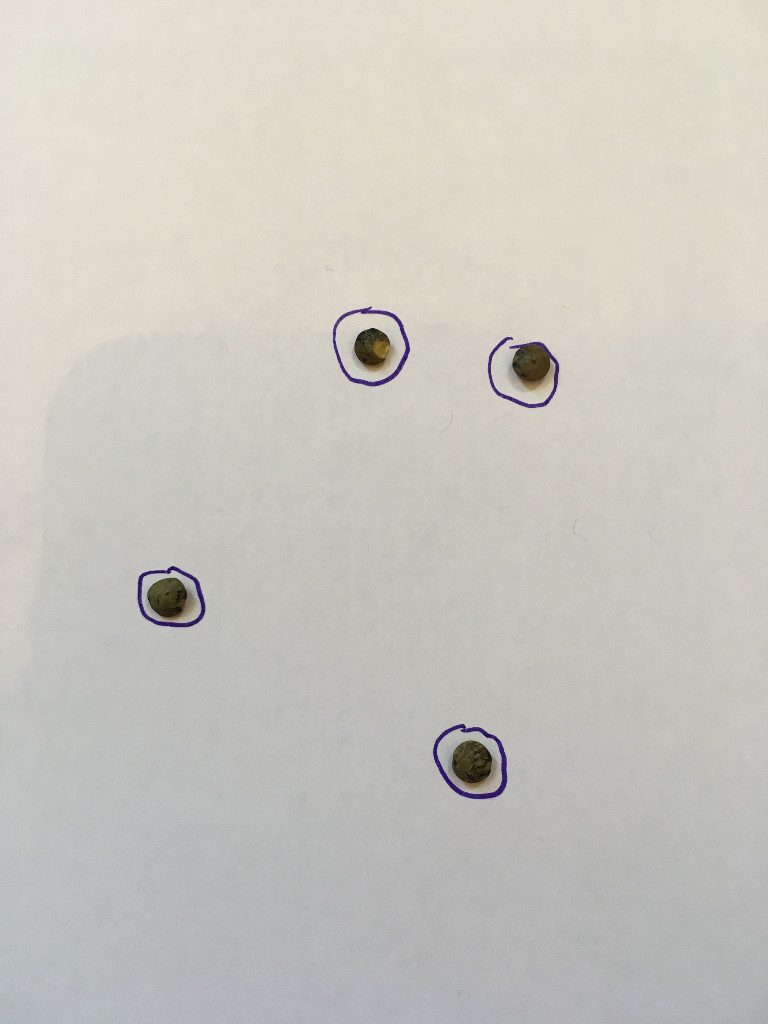
Step 6: draw carefully around each lentil 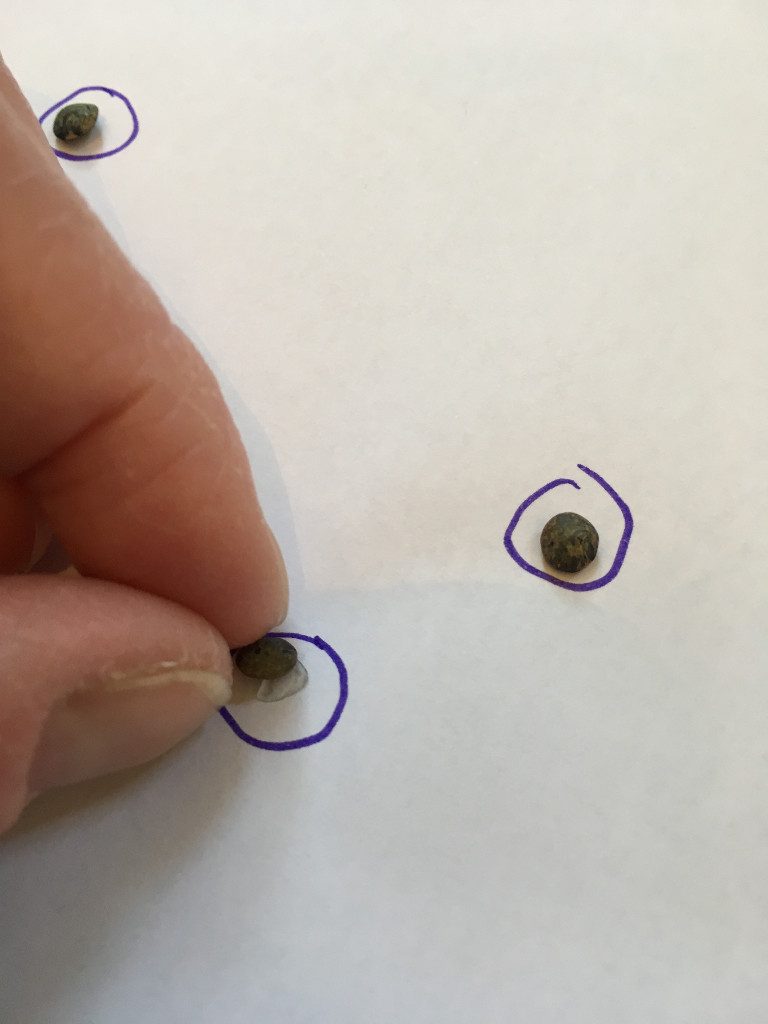
Step 7: glue each lentil to the paper so they don’t fall off! 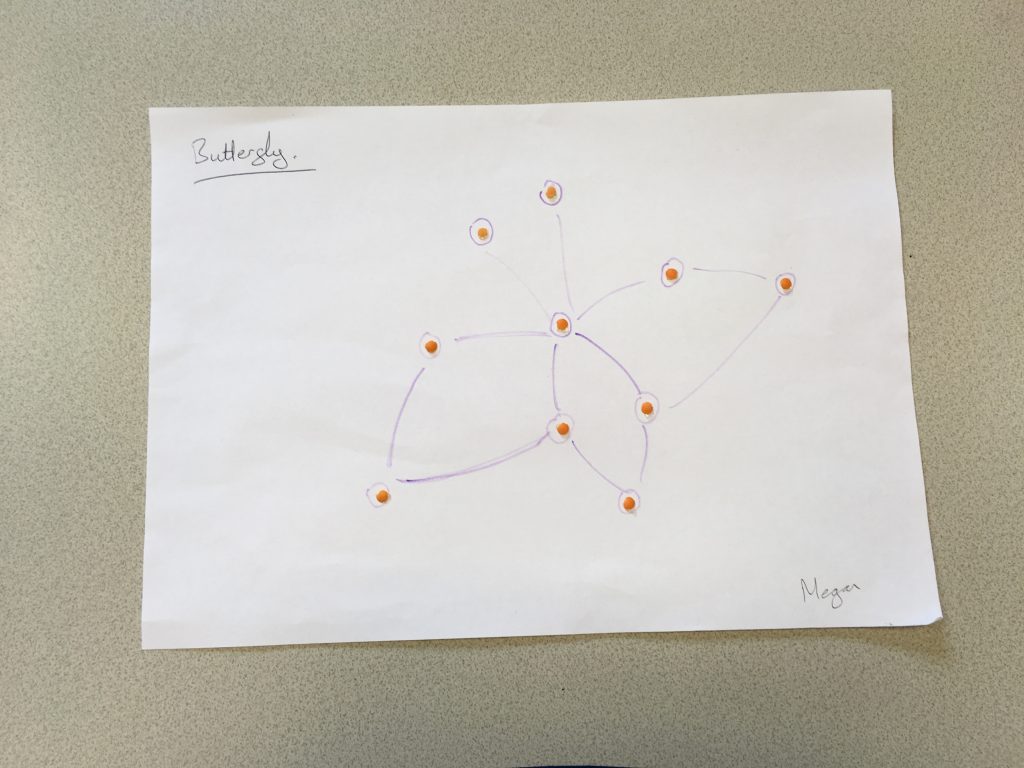
Step 8&9: join the dots to make your constellation, and give it a name
Above: some star maps created by students at St Joseph’s RC Primary School
Extension: The idea of constellations could be further explored by encouraging the students to come up with their own stories for their constellations describing how their constellation came to be in the sky.
You could tell the story of How Coyote Made the Stars as a starting point and prompt them to think – How did their constellation come to be in the Sky?
The students could be encouraged to tell their stories to the rest of the class (or in groups) to bring in aspects of spoken language, vocabulary development and story construction.
As a further extension, the students could use a further sheet of paper to write down their story, and the story and picture could be mounted on construction paper to form a classroom display.
Common misconceptions:
- Constellations are often thought to be physical associations of stars, when in reality they are entirely artificial and the shapes we see are purely line-of-sight effects.
- Stars are sometimes pictured as being stuck to the sky, all at the same distance. In reality the stars are spread throughout space, some are close to the Earth, others are much further away.
Use with other years:
- Year 5 Earth and Space – As part of exploration of the Solar System
- KS2 Literacy – Exploring the links between Greek constellations and Greek mythology
- KS1 & 2 Geography – Understanding that every culture “joins the dots in the sky” differently
Curriculum links:
- Maths KS2 number– counting and measuring
- Science KS1 light– the sky is dark at night due to the absence of sunlight, the stars are small points of light
- English KS1/2 spoken language– use spoken language to develop understanding through (speculating, hypothesising,) imagining and exploring ideas
- English KS1/2 spoken language– speak audibly and fluently with an increasing command of Standard English
- English KS1/2 spoken language– participate in discussions, presentations, performances, role play, improvisations and debates
- English KS1/2 spoken language– gain, maintain and monitor the interest of the listener(s)
- English KS1 writing – composition– sequencing sentences to form short narratives
- English KS1 writing – composition– consider what they are going to write before beginning by planning or saying out loud what they are going to write about
Linked activities:
Constellations, making your own constellation mobile using simple materials – We Share the Same Moon: https://www.wesharethesamemoon.org/?p=1351
Make a star lantern, can be used to introduce the idea of constellations where this is less familiar – astroEDU:
https://astroedu.iau.org/en/activities/1613/make-a-star-lantern/
Copyright: Megan Argo 2019

